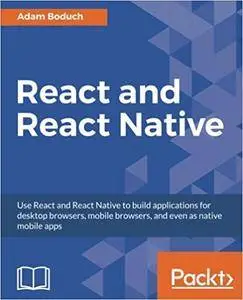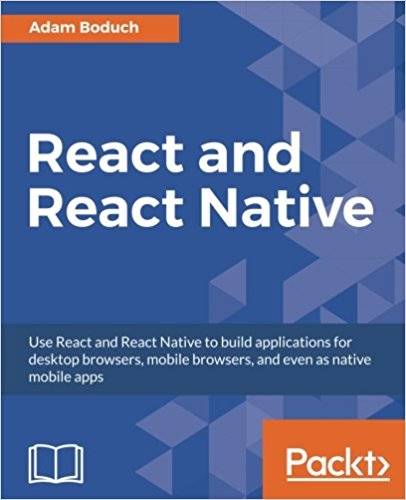React and React Native
English | 2017 | ISBN-10: 1786465655 | 500 pages | PDF (conv) | 2.18 Mb
English | 2017 | ISBN-10: 1786465655 | 500 pages | PDF (conv) | 2.18 Mb
Build React and React Native applications using familiar component concepts
Dive deep into each platform, from routing in React to creating native mobile applications that can run offline
Use Facebook’s Relay, React and GraphQL technologies, to create a unified architecture that powers both web and native applications
Book Description
React and React Native allow you to build cross-platform desktop and mobile applications using Facebook’s innovative UI libraries. Combined with the Flux data architecture and Relay, you can now create powerful and feature-complete applications from just one code base!
This book is split into three parts. The first part shows you how to start crafting composable UIs using React, from rendering with JSX and creating reusable components through to routing and creating isomorphic applications that run on Node.
We then move on to showing you how to take the concepts of React and apply them to building Native UIs using React Native. You’ll find out how to build responsive and streamlined UIs that can properly handle user interactions in a mobile environment. You’ll also learn how to access device-specific APIs such as the geolocation API, and how to handle offline development with React Native.
Finally, we’ll tie all of these skills together and shows you how you can create React applications that run on every major platform. As well as understanding application state in depth, you’ll learn how to leverage Relay to make feature-complete, data-driven web and native mobile applications.
What you will learn
Craft reusable React components
Control navigation using the React Router to help keep your UI in sync with URLs
Build isomorphic web applications using Node.js
Use the Flexbox layout model to create responsive mobile designs
Leverage the native APIs of Android and iOS to build engaging applications with React Native
Respond to gestures in a way that’s intuitive for the user
Use Relay to build a unified data architecture for your React UIs
About the Author
Adam Boduch has been involved with large-scale JavaScript development for nearly 10 years. Before moving to the front end, he worked on several large-scale cloud computing products, using Python and Linux. No stranger to complexity, Adam has practical experience with real-world software systems, and the scaling challenges they pose.
He is the author of several JavaScript books, including Flux Architecture, and is passionate about innovative user experiences and high performance.
Table of Contents
Why React?
Rendering with JSX
Understanding Properties and State
Event Handling – The React Way
Crafting Reusable Components
The React Component Lifecycle
Validating Component Properties
Extending Components
Handling Navigation with Routes
Server-Side React Components
Mobile-First React Components
Why React Native?
Kickstarting React Native Projects
Building Responsive Layouts with Flexbox
Navigating Between Screens
Rendering Item Lists
Showing Progress
Geolocation and Maps
Collecting User Input
Alerts, Notifications, and Confirmation
Responding to User Gestures
Controlling Image Display
Going Offline
Handling Application State
Why Relay and GraphQL?
Building a Relay React App



